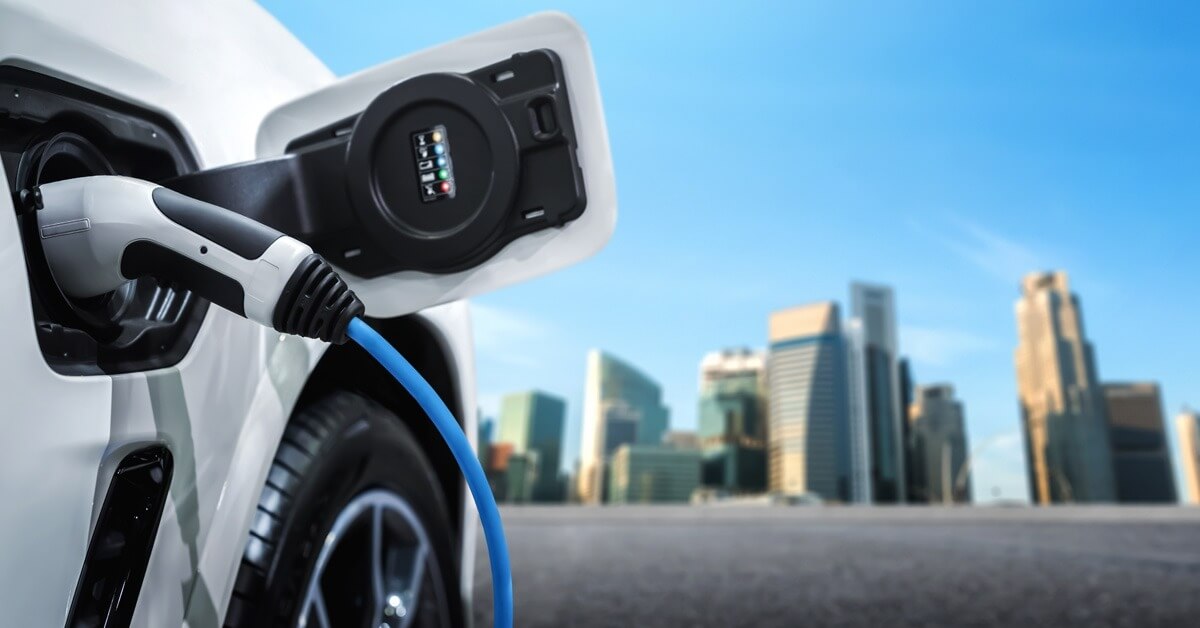Navigating the Switch: Essential Tips for Transitioning to Electric Vehicles
Optimizing Your EV Experience: Proven Strategies for Efficiency and Enjoyment

Find your tyre
READ THE DIMENSIONS OF TYRES

Electric Vehicles (EVs) represent a significant shift in the automotive paradigm, steering the world away from fossil-fueled transportation towards a cleaner, more sustainable future. Initially emerging as a niche market, EVs have rapidly gained momentum and are now poised to become a mainstream choice for consumers due to advancements in technology, policy support, and growing environmental consciousness.
At their core, EVs are vehicles that are either partially or entirely powered by electricity. They come in various forms, including Battery Electric Vehicles (BEVs) that run solely on electric batteries, Hybrid Electric Vehicles (HEVs) that combine traditional internal combustion engines with electric propulsion, and Plug-in Hybrid Electric Vehicles (PHEVs) that can recharge their batteries through both regenerative braking and plugging into an external power source.
EVs are distinguished by their electric motors, which provide instantaneous torque, resulting in quick acceleration and a smooth, quiet driving experience. Unlike internal combustion engine vehicles, EVs do not produce tailpipe emissions, making them an environmentally friendly alternative to their gas-guzzling counterparts. This zero-emission feature is particularly appealing as it directly addresses concerns about air quality and carbon footprints.
The transition to EVs is not just driven by the goal of reducing environmental impact, but also by the evolution of automotive technology. With the development of longer-lasting batteries, the expansion of charging infrastructure, and the introduction of cost-effective models, the barriers to EV adoption are rapidly diminishing. As consumers and institutions increasingly consider the switch, understanding the nuances of electric mobility becomes ever more important.
Benefits of Transitioning to EVs
The transition to Electric Vehicles (EVs) carries an array of benefits that extend beyond the individual owner to society at large, marking a pivot toward sustainable and responsible commuting. One of the foremost advantages is the significant reduction in emissions. EVs produce zero tailpipe emissions, which contributes to improved air quality and a decrease in greenhouse gases—a step forward in combating climate change.
Another benefit is the lower operating costs associated with EVs. Electricity, as a fuel, is generally cheaper than gasoline, and because EVs have fewer moving parts than internal combustion engine vehicles, they often promise lower maintenance expenses. This can translate to long-term cost savings for owners, despite the higher initial investment EVs sometimes demand.
Transitioning to EVs also fosters energy independence. By using domestically produced electricity, countries can reduce their reliance on imported oil, bolstering their energy security and potentially stabilizing fuel costs. Additionally, owning an EV can provide a more responsive and quieter driving experience, enhancing the pleasure of driving.
There is also a growing array of incentives offered by governments and local authorities to encourage EV adoption. These can include tax credits, rebates, reduced registration fees, and access to carpool lanes. Moreover, with the expansion of renewable energy sources, EVs have the promise of becoming even more environmentally friendly over time, as the electricity used to charge them becomes greener.
The combined environmental, economic, and experiential benefits make transitioning to EVs an attractive and forward-looking choice for consumers and nations alike.
Understanding the Costs of EV Ownership
Transitioning to electric vehicles (EVs) involves a fresh evaluation of the costs associated with vehicle ownership. Initially, the purchase price of EVs may be higher than traditional gasoline cars, but the overall cost of ownership can often be lower due to various factors. One must consider not only the sticker price but also the long-term running and maintenance expenses.
Electric cars are known for requiring less maintenance than combustion engine vehicles since they have fewer moving parts and do not need oil changes. This translates into potentially significant savings over the life of the vehicle. However, battery replacement, which may become necessary after several years of use, can be a considerable expense; it is crucial to be aware of the warranty and lifespan of the EV's battery.
Running costs are another factor where EVs shine. Electricity is generally cheaper than gasoline, meaning that the "refueling" costs of an EV are lower. The fluctuating prices of electricity and the availability of off-peak charging discounts can further drive down costs.
Governments around the world are offering various incentives for EV buyers, such as tax credits, rebates, and grants, which can substantially offset the purchase price. Additionally, the residual value of EVs can be higher, due to increasing demand for used electric cars.
Owners must also account for the installation of charging equipment at home, although some incentives and programs can help defray these initial outlays. By thoroughly understanding the costs involved, prospective EV owners can make informed decisions and capitalize on the economic advantages of electric vehicle ownership.
Preparing for the EV Transition
Transitioning to electric vehicles (EVs) entails several preparatory steps to ensure a smooth changeover. This begins with educating oneself about the specific needs and benefits of EV ownership. Prospective EV owners should start by researching various models to understand which type of EV – be it a full battery electric vehicle (BEV), plug-in hybrid electric vehicle (PHEV), or a hybrid – suits their driving habits and range requirements.
Installing a home charging station is a pivotal preparation for EV transition. Homeowners need to assess their current electrical capacity and consider upgrading their home's electrical panel if necessary. An electrician certified in EV charger installation can provide consultations and services for this purpose. For renters or those without easy access to home charging, exploring local public charging options or workplace charging availability can be alternatives.
In addition, potential EV owners should investigate available tax credits, incentives, and rebates offered by local, state, and federal governments, as well as utility companies, which can offset some of the initial costs of purchasing and installing EV charging infrastructure.
Insurance costs may also differ for electric vehicles; hence, obtaining quotes from insurance providers about coverage for EVs will be important. By considering maintenance costs, which are typically lower for EVs due to fewer moving parts, owners can better estimate the overall cost of ownership.
Lastly, preparing for the EV transition also involves planning for long trips. Future EV owners should familiarize themselves with the locations of charging stations along commonly traveled routes and adjust travel planning accordingly. Examining the charging speeds and network affiliations can help mitigate range anxiety and ensure readiness for the new electric driving experience.
Top Tips for a Smooth EV Transition
Embracing the age of electric vehicles requires careful planning and a few strategic considerations. To ensure a seamless shift, here are top tips for transitioning to EVs:
1. Research and Select the Right EV: Start by determining your driving needs, like range, charging time, and vehicle size. Compare different models to find one that suits your lifestyle and budget.
2. Plan Your Charging Strategy: Decide if you'll rely on public charging stations or if you'll install a home charging setup. If opting for home charging, work with a certified electrician to install a Level 2 charger for faster charging times.
3. Take Advantage of Incentives: Look into federal, state, and local incentives that might reduce your initial purchase costs, including tax credits, rebates, and discounted registration fees.
4. Prepare Your Budget: EVs may carry a higher upfront cost, but they often result in lower operating expenses. Factor in potential savings on fuel and maintenance when budgeting for your new EV.
5. Test Drive Multiple Models: Get behind the wheel of several EVs to experience the differences in performance, handling, and features. This will help you make a more informed decision.
6. Educate Yourself on EV Maintenance: While EVs generally require less maintenance than combustion engine vehicles, familiarize yourself with the maintenance schedule and unique needs of electric vehicles.
7. Network with EV Owners: Join forums, social media groups, or local clubs dedicated to EV owners. These communities can offer support, answer questions, and provide tips based on their experiences.
By following these guidelines, you'll be better positioned for a successful transition to electric vehicles, paving the way for a future of sustainable and enjoyable motoring.
Embracing the Future: The Road Ahead with EVs
As we prepare to embrace the future of transportation, the shift towards Electric Vehicles (EVs) represents a significant milestone in the evolution of mobility. The road ahead with EVs is paved with innovative technologies, cleaner energy, and a more sustainable outlook on personal and public transport. In this journey, it's essential to not only acknowledge but to actively participate in the changes it entails.
Moving forward, consumers will find themselves at the forefront of automotive advancements, from increasing numbers of electric models available in the market to improved battery technologies that promise longer ranges and faster charging times. Governments and industries are also joining forces to expand infrastructure, building a network of charging stations that ensures convenience and accessibility for EV users.
The environmental benefits are also noteworthy. With widespread adoption, we are looking at a future of reduced greenhouse gas emissions and a significant impact on climate change mitigation efforts. This is complemented by economic advantages, such as lower running and maintenance costs, as well as energy independence from volatile oil markets.
In this scenario, the key to a successful transition lies in education and adaptation. Consumers must remain informed about the benefits and practicalities of EV ownership. Meanwhile, industries and policymakers need to create conducive environments for EV adoption through incentives, support for renewable energy integration, and urban planning that accommodates the shift.
Embracing the future with EVs means taking the driver's seat in a movement that champions innovation, embraces ecological responsibility, and heralds a new era of transportation that aligns with the pressing needs of our planet. The road ahead is not just about change; it's about progressing with purpose toward a greener and more connected world.
